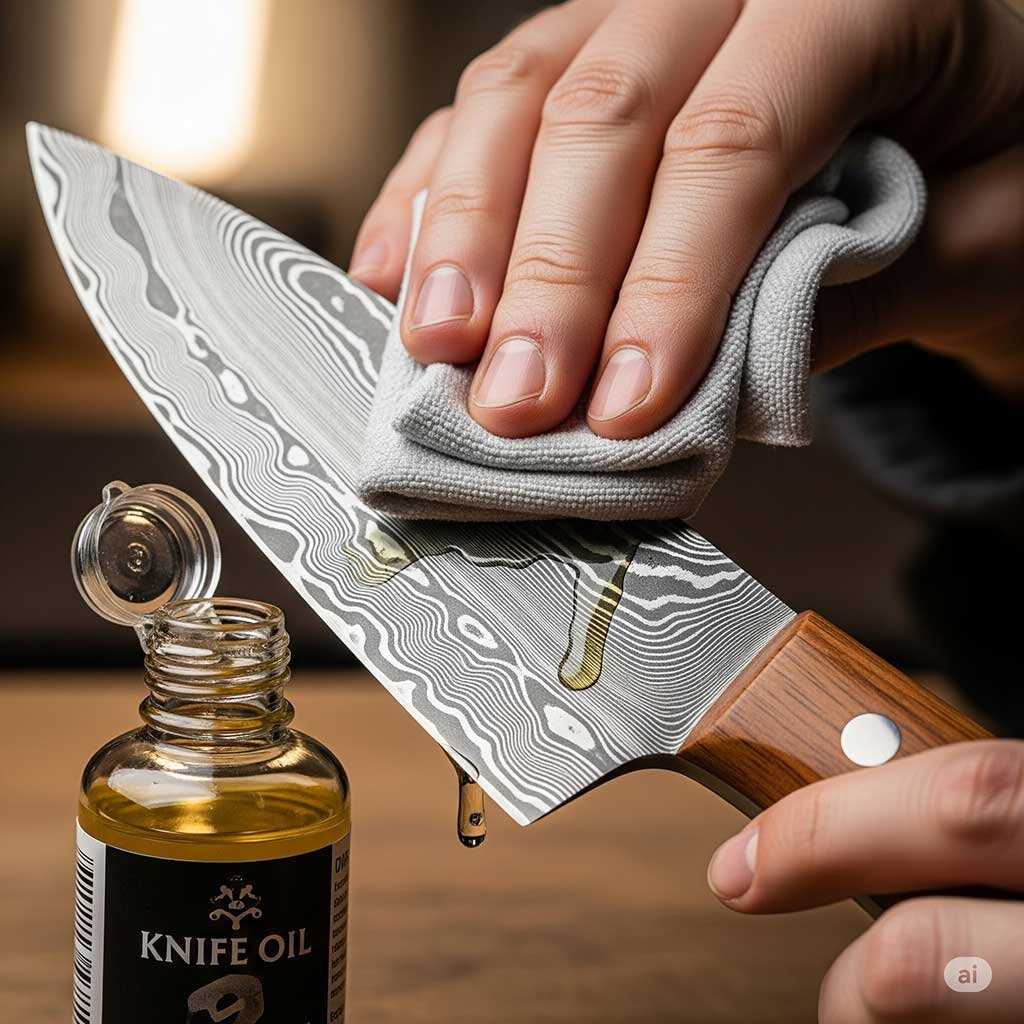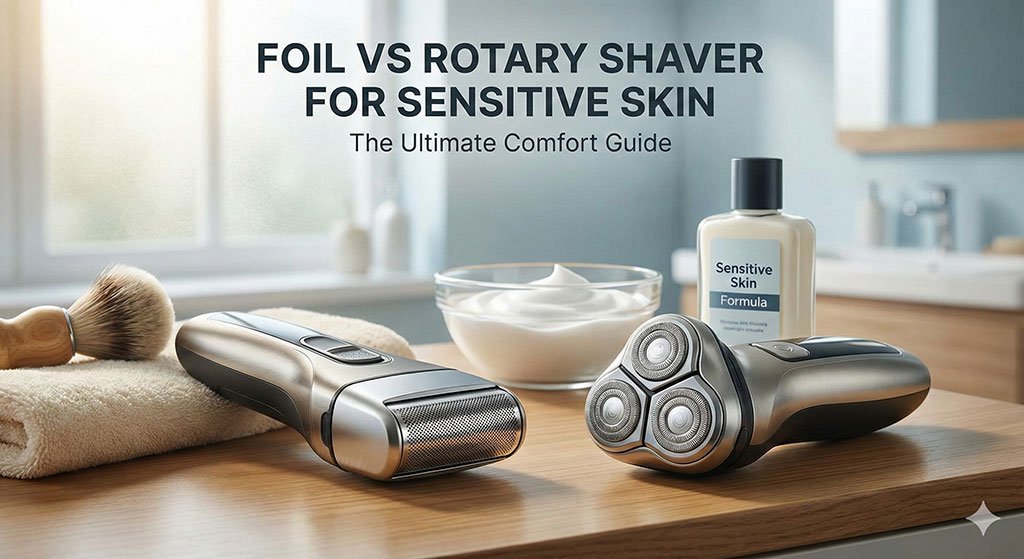Is your beautiful Damascus steel knife looking a little dull? Don’t let its intricate patterns fade away! Learning how to properly care for your Damascus steel knife is essential to maintaining its beauty and performance for years to come. This comprehensive guide will walk you through everything you need to know, from routine cleaning to long-term storage, ensuring your knife remains a treasured tool and a stunning work of art.

Table of Contents
Why Damascus Steel Knife is Unique?
Before we dive into the care instructions, let’s briefly understand what makes Damascus steel so unique. It’s not just one type of steel, but a blend of two or more different steels forged together. This incredible process, often involving a lot of folding and hammering, creates the beautiful and distinctive wavy patterns you see on the blade.
These patterns aren’t just for show; they’re the result of the different properties of the steel layers. One layer might be a high-carbon steel for that incredible sharpness, while another might be a softer, more flexible steel for durability. This combination gives Damascus steel its unique balance of strength and flexibility, creating a blade that’s both a workhorse and a work of art.
How to Care Your Damascus Steel Knife?
Damascus steel, especially the high-carbon variety, is more susceptible to rust and corrosion than a standard stainless steel blade. Neglecting proper care can lead to rust spots, discoloration, and even damage to the blade’s integrity.
Think of your Damascus steel knife as a piece of fine craftsmanship that needs a little extra attention to stay in top condition. By following these simple steps, you can prevent these issues and ensure your knife’s longevity. It’s a small investment of time that pays off big time in the long run.
Your Daily Routine Care: The Golden Rules
Proper daily care is the most vital part of maintaining your Damascus steel knife. These are simple habits that will make a huge difference.
- Hands-On Washing Only: Never, ever put your Damascus steel knife in a dishwasher. The harsh detergents, high heat, and aggressive cycles will strip the blade of its natural oils, cause rust, and damage the handle. Always wash your knife by hand.
- Wash It Right Away: Don’t let food particles dry on the blade. As soon as you finish using your knife, give it a quick wash. Use a soft sponge or cloth with a mild dish soap and warm water.
- The Power of a Thorough Dry: This is arguably the most important step. Water is the enemy of carbon steel. After washing, immediately and completely dry the blade and handle with a soft, clean cloth. Pay close attention to the area where the blade meets the handle, as water loves to get trapped there. A quick wipe with a dry cloth can save you from a lot of heartache.
- A Protective Coat of Oil: After drying, apply a thin layer of food-safe mineral oil to the blade. This creates a protective barrier against moisture and helps to prevent rust. You can use a dedicated knife oil or even a light coat of cooking oil like vegetable or coconut oil in a pinch. Just a few drops are enough; you don’t need to soak it.
The Right Home for Your Knife
How you store your knife is just as important as how you clean it. Improper storage can lead to dings, scratches, and even rust.
- A Safe Place to Rest: A good quality knife block with individual slots is an excellent choice. A magnetic knife strip is also a great option, as it allows for easy access and prevents the blades from bumping into each other.
- Guard Your Blade: If you store your knife in a drawer, always use a blade guard. This protects the sharp edge from becoming dull and prevents accidental cuts when reaching into the drawer.
- Think Twice About Sheaths: Leather sheaths are great for carrying your knife, but they aren’t ideal for long-term storage. Leather can retain moisture, which can lead to rust on the blade. If you must store it in a sheath, make sure the knife and sheath are completely dry and check on it regularly.
Keeping That Edge Sharp
A sharp knife is a safe knife. Keeping a keen edge on your Damascus steel blade is crucial for its performance.
- Honing is Your Friend: Use a honing rod regularly to realign the blade’s edge. This doesn’t remove metal but straightens out the microscopic bends in the blade, keeping it sharp for longer. A few gentle strokes before each use is a great habit.
- When It Needs a Real Sharpening: When your knife no longer responds to honing, it’s time to sharpen it. You can use a whetstone, an electric sharpener, or take it to a professional. If you choose to use a whetstone, practice proper technique to avoid damaging the blade. Start with a coarse stone to set the bevel, then move to a finer stone to refine the edge.
- Don’t Be Afraid to Ask for Help: If you’re unsure about sharpening your knife yourself, don’t hesitate to take it to a professional. They have the right tools and expertise to maintain the blade’s integrity and beautiful pattern.
Caring for the Handle
The blade isn’t the only part that needs attention. The handle also requires care to ensure it doesn’t crack or become loose.
- Wooden Handles: Many Damascus knives have beautiful wooden handles. To prevent them from drying out and cracking, rub a small amount of mineral oil into the wood every few months. This will keep the wood hydrated and looking new.
- Composite or Synthetic Handles: These handles are generally low-maintenance. Simply wash them with mild soap and water and dry them thoroughly.
Damascus Knife Maintenance
Proper maintenance is key to keeping your Damascus knife in pristine condition. Think of it as a regular check-up for your blade, ensuring it stays sharp, beautiful, and free from rust. By incorporating a few simple habits into your routine, you can preserve the unique character of your knife for a lifetime.
Here are the essential steps for effective Damascus knife maintenance
- Immediate Cleaning: After every use, wash your knife by hand with warm water and mild dish soap. Never put it in the dishwasher, as the harsh chemicals and high temperatures will damage the blade and handle.
- Thorough Drying: This is a non-negotiable step. Immediately after washing, dry the knife completely with a soft, clean towel. Pay extra attention to the edge and the area where the blade meets the handle to prevent any moisture from remaining.
- Protective Oiling: Once the blade is bone-dry, apply a thin coat of food-safe mineral oil. This creates a crucial barrier that protects the carbon steel layers from moisture, which is the primary cause of rust.
- Regular Honing: To keep your knife’s edge aligned, use a honing rod before each use. This realigns the microscopic particles of the blade, keeping it sharp for longer and reducing the need for frequent sharpening.
- Handle Conditioning: For knives with wooden handles, apply a small amount of mineral oil to the wood every few months. This prevents the handle from drying out, cracking, and becoming loose over time.
How to Fix Common Issues fo Damascus Steel Knife
Even with the best care, you might encounter some issues. Here’s a quick guide to troubleshooting common problems.
Problem | Cause | Solution |
Rust Spots | Moisture left on the blade, lack of oil, high humidity | Gently rub the rust spot with a soft cloth and a rust-removing polish or a fine-grit polishing compound. For minor spots, a paste of baking soda and water can also work. |
Discoloration/Patina | Reaction with acidic foods | This is a natural process for high-carbon steel and is often desired by enthusiasts. If you want to remove it, a gentle polish with a non-abrasive cleaner can help. However, many people embrace the unique character a patina adds. |
Dull Edge | Regular use, improper honing | Hone the blade with a honing rod. If that doesn’t work, sharpen it with a whetstone or an electric sharpener, or take it to a professional. |
Loose Handle | Drying out of the wood, or a loose pin/rivet | For wooden handles, apply mineral oil to hydrate the wood. For a loose pin, it’s best to take it to a professional knife maker or a qualified repair person. |
FAQ
Yes, it can be, especially if the steel layers include high-carbon steel. This is why proper drying and oiling are so critical. The more carbon in the steel, the more susceptible it is to rust, but it also holds a sharper edge. It’s a trade-off worth the extra effort!
While it’s a versatile tool, avoid using it on hard surfaces like glass, ceramic, or stone cutting boards. Stick to wood or plastic cutting boards to protect the delicate edge. Also, do not use it to pry or chop frozen foods. Think of it as a precision tool, not a demolition tool.
Food-safe mineral oil is the best choice. It’s inexpensive, easily available, and won’t go rancid. You can find it at drugstores or online. Other options include camellia oil, which is also excellent for knife maintenance.
After every single wash and dry is the best practice. For long-term storage, a light coat of oil every few weeks is a good idea, especially if you live in a humid climate.
For deeper rust, you need to be very careful. Use a fine-grit sandpaper (1000 grit or higher) and gently rub the affected area. Always rub in the direction of the blade’s grain. Be aware that this might slightly alter the pattern in that spot. It’s often best to consult a professional for significant rust.
Absolutely. A patina is a natural, protective layer that forms on high-carbon steel. It’s usually a gray or bluish hue and is often seen as a sign of a well-used and loved knife. This patina actually helps prevent red rust from forming.
Yes, but this is a complex process. It involves a careful polishing and etching process using a mild acid solution. This should only be done by a professional knifemaker or a very experienced hobbyist, as improper technique can damage the blade.
Conclusion
Your Damascus steel knife is more than just a kitchen tool; it’s a work of art. With a little care and attention, you can keep its intricate patterns and razor-sharp edge in perfect condition. Remember to always wash by hand, dry completely, and apply a protective oil. Following this Damascus steel knife care guide will ensure your knife remains a beautiful and functional part of your collection for a lifetime.



